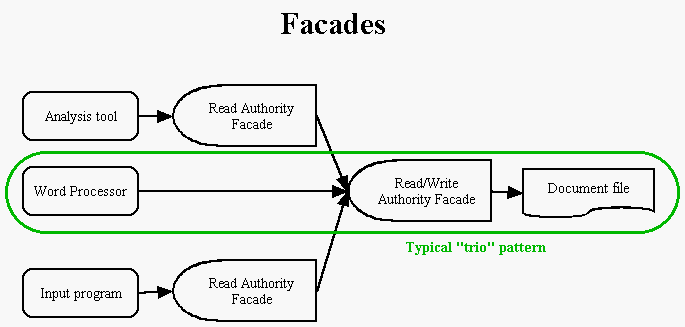
<< Previous << [Session1 Index] >> Next >>

As the diagram depicts, you can also build facades on the facades. If, for example, you have access to the Read/Write Facade, and wish to pass read-only authority to another object (perhaps written by yet another software developer), you can simply construct a Read Authority Facade on the more powerful facade.
Technically, this is not quite a facade as defined in the book Design Patterns. A true facade represents a collection of objects, not a single object. This pattern also looks like an adapter pattern, but the purpose of adapters is to standardize interfaces, not restrict them. In the E language, these capability-restricting objects are frequently called facets to avoid confusion with other patterns. A pure facet embodies no new features, just a subset of capabilities found in another object.